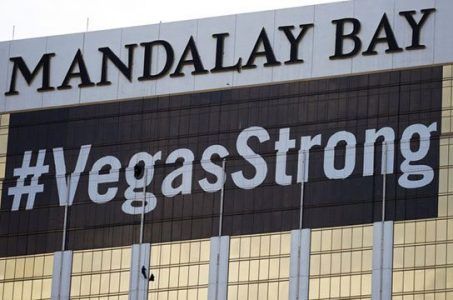Penn National Removed From S&P Negative List, But Rating Remains Junk
Posted on: September 15, 2020, 06:25h.
Last updated on: September 15, 2020, 06:41h.
Good news continues piling up for Penn National Gaming (NASDAQ:PENN) investors, as Standard & Poor’s (S&P) removed the casino operator’s debt from the “CreditWatch Negative” group. The service cited reopened properties and adequate lease coverage.

Companies on the CreditWatch Negative list are often financially strained, frequently sport non-investment grade credit ratings, and are at risk of further downgrades. While S&P pulled that dubious distinction from Penn, the research firm reiterates a “B” rating — deep into junk territory — with a “negative” outlook on the operator’s debt.
S&P and rival credit firms punished Penn’s rating in March, just as the stock was starting to rebound from its coronavirus lows. From the nadir in the third month of the year, Penn stock is up a staggering 1,719.49 percent. That move could be pricing in upcoming improvements in earnings before interest, taxes, depreciation and amortization (EBITDA).
Our estimate that Penn’s EBITDA will increase over the next several quarters assumes a modest improvement in its EBITDA margin relative to 2019 due to the cost cuts management implemented over the past few months, particularly related to its labor and marketing expense,” said S&P in a note out Tuesday.
The research firm estimates the gaming company’s net leverage ratio will decline below 7.5x next year, which is pivotal because that threshold, if topped, could trigger a debt downgrade.
Regional Promise, Improving Margins
Like so many research firms, S&P is enthusiastic about Penn’s status as a regional gaming company with reduced exposure to the Las Vegas Strip.
In the largest US gaming center, Penn operates the Tropicana and the M Resort. But its 39 other venues are primarily in regional, not destination markets. Following the coronavirus reopening, many regional operators got leaner, trimming headcount and abandoning less profitable offerings while boosting margins to Wall Street’s liking.
“Additionally, our expectation that the company will improve its margin reflects our view that many of its lower-margin or loss-leading amenities, like buffets, will remain closed for some time to comply with health and safety measures intended to limit the spread of the coronavirus,” notes S&P.
The research firm adds that although Penn’s revenue could be crimped because it’s operating below capacity in many markets, that’s not a warning sign, because “We believe the historical peak utilization rates in many markets were below these limits.”
An Interesting Omission
These days, most conversations about Penn stock revolve around one or all of the following factors: iGaming, sports betting and the company’s 36 percent stake in Barstool Sports.
However, despite the fact that S&P’s note hit the wires on the same day that the Barstool Sportsbook app launched in Pennsylvania, the ratings agency makes no mention of any of those topics.
Rather, the research firm focused on margins and Penn’s ability to meet lease obligations, which is critical because high fixed rent payments can create liquidity concerns in rough operating environments, as was seen earlier this year.
“Penn National ended the second quarter with about $1.2 billion of cash on its balance sheet, which we believe provides it with sufficient liquidity to navigate the potential volatility in future quarter,” said S&P.
Related News Articles
Seven Cases of Legionnaires’ Disease Now Linked to Rio
Casino Stocks Among Q3 Consumer Discretionary Leaders
Most Popular
Mirage Las Vegas Demolition to Start Next Week, Atrium a Goner
Where All the Mirage Relics Will Go
Most Commented
-
Bally’s Facing Five Months of Daily Demolition for Chicago Casino
— June 18, 2024 — 12 Comments
















No comments yet